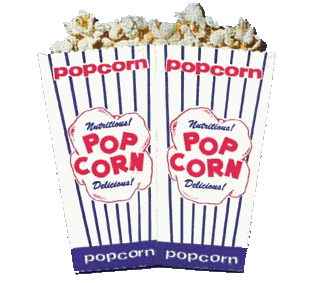In honor of Thanksgiving, I wanted to post a few really interesting excerpts from one of my favorite nonfiction books, Mindless Eating by Brian Wansink. The book is meant to be a lifestyle book - it explains all sorts of influences that affect how much we eat, how much we enjoy what we eat, and more. It also works as a diet book, because the premise is if you can make little changes that result in eating less without even noticing, then you can lose weight without noticing. They call this the "mindfulness gap." Essentially, eating 100-200 calories less per day can add up to losing 10 pounds in a year. Also, that means eating 100-200 calories extra per day can add up to gaining 10 pounds in a year - yikes.
I love food, I love books and I love research related to food, so this is one of my favorite books. I reread it all the time. Here are some of my favorite research anecdotes from the book, and ways you could consider applying it to your Thanksgiving meal (let's be honest - would you really notice eating 20% less on Thanksgiving??).
1) Popcorn Study - Eat your food on smaller plates or use only one plate at a time.
The experiment: Researchers gave movie-goers free popcorn - half were given a medium popcorn and half were given a large. The catch? The popcorn was five days stale. Both popcorn sizes were designed to be large enough that neither group was able to finish all of their popcorn. Then, when the movie ended, researches weighed how much popcorn was left. Interestingly, upon exit of the movie, the people with the large popcorns were certain that the size of the container had no effect on them.
The results: The big popcorn group at 173 calories more popcorn - an average of 53% more than people with the medium bucket. Keep in mind this had nothing to do with the popcorn being delicious - it was STALE. But, the size of the bucket influnced the eating behavior.
2) North Dakota Wine - Environment sets expectations, so set your environment.
The experiment: Half of a controlled restaurant was given wine from "North Dakota" and half was given wine from "California." It was actually the same wine - Two Buck Chuck/Charles Shaw.
The results: Both groups drank the same amount of wine, which was not surprising because they were only given one glass. However, those with the California wine ate 11% more of their food and stayed 10 minutes longer at the table.
The findings showed that those receiving the California wine told themselves something along the lines of "Oh, this meal is going to be good," while the North Dakota drinkers convinced themselves the meal was going to be a disappointment. The takeaway? People are making subconscious decisions about the meal based on their first impressions. Make your surroundings beautiful and consider your display. It will affect how people enjoy the food.
3) Chicken Wing Experiment- Leave yourself visual clues of how much you have eaten
The experiment: 53 MBA students were invited to a Super Bowl party. They were allowed to take all the wings they wanted. The waitresses were in on the experiment, and only cleared off half of the tables. That means piles of bones were growing on some tables, while others were sparkling clean.
The results: Those with their tables constantly being bussed ate an average of 7 wings. Those with the reminders of bones on their table ate an average of 5 wings (28% less!). Therefore, whenever possible, leave yourself reminders of how much you have eaten. If you go back for seconds and use another plate, leave the old plate on the table.
4) Happy Thanksgiving!




No comments:
Post a Comment